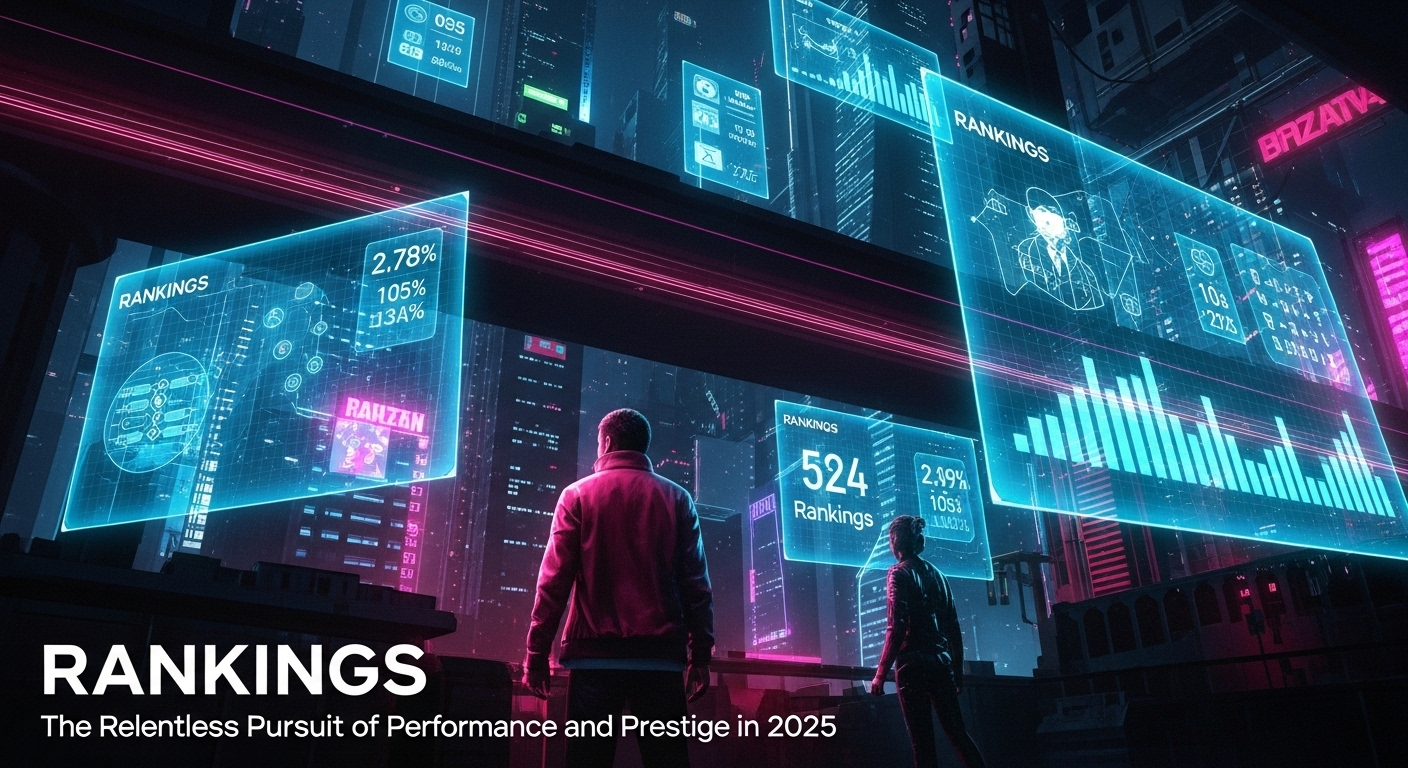In our data-driven, hyper-competitive world, “rankings” have become omnipresent – a ubiquitous mechanism for evaluating, comparing, and influencing decisions across virtually every domain. From the elite athletes striving for a top spot in global sports to universities vying for academic prestige, cities competing for global influence, and nations asserting their geopolitical standing, rankings provide a powerful, albeit often debated, snapshot of comparative performance. As of mid-2025, these intricate systems continue to shape aspirations, fuel investments, and reflect the ever-shifting dynamics of excellence worldwide.
What are Rankings? Measuring Relative Standing and Impact
At its essence, a ranking system is a method of ordering entities (individuals, teams, institutions, cities, countries, etc.) based on predefined performance metrics. Each entity receives a position (rank) that indicates its relative standing against all others in the system, with the highest-performing entity typically occupying rank #1.
Key aspects of effective and impactful rankings include:
- Transparent Criteria: Reputable rankings clearly define the specific criteria chosen to measure performance. These can be quantitative (e.g., win-loss records, GDP, research citations, international student ratios) or qualitative (e.g., reputation surveys, expert opinions).
- Robust Methodology: The formula or algorithm used to weight different criteria and calculate the final score or position is crucial. Methodologies vary widely, leading to different outcomes across various ranking systems. The best methodologies are constantly refined and publicly accessible for scrutiny.
- Dynamic Nature: Most rankings are not static; they are updated regularly (daily, weekly, annually) to reflect ongoing performance, emerging trends, and changes in underlying data.
- Influence on Decision-Making: Rankings actively shape critical decisions for stakeholders, from students choosing universities to investors identifying city potential, and policymakers allocating resources.
The Power and Purpose of Rankings
Rankings serve several critical functions across diverse fields:
- Benchmarking and Strategic Improvement: They provide a quantifiable benchmark against peers, allowing entities to identify strengths, weaknesses, and areas for improvement. A university, for instance, can analyze its ranking criteria to strategically invest in research, faculty development, or international collaborations to climb the ranks.
- Motivation and Aspiration: Rankings inject purpose into competition, motivating individuals, teams, and organizations to strive for excellence. Climbing the ranks becomes a significant goal, fueling dedication, resource investment, and continuous innovation.
- Visibility and Reputation: A high ranking can significantly enhance visibility, prestige, and reputation. A top-ranked university attracts better students, world-class faculty, and increased research funding, just as a highly-ranked athlete or team draws more sponsorships and media attention.
- Decision-Making Tool: Rankings often influence critical choices. Prospective students use university rankings to choose where to study, global businesses consult city rankings for relocation or expansion, investors utilize country rankings for market entry, and sports federations use player rankings for tournament seeding and qualification.
- Public Discourse: Rankings generate extensive conversation and debate, engaging stakeholders and fostering a deeper understanding of various fields. They highlight trends and shifts in performance.
Global Ranking Landscapes in 2025: A Snapshot
Let’s explore how rankings are impacting key sectors:
- Higher Education: University rankings (e.g., QS World University Rankings, Times Higher Education (THE) World University Rankings) are immensely influential. The QS World University Rankings 2026 (released in June 2025) ranked over 1,500 institutions. MIT continues its streak as the top university globally. The Times Higher Education (THE) World University Rankings 2025 (released October 2024) ranked over 2,000 institutions, with the University of Oxford at #1. These rankings consider academic reputation, employer reputation, research quality (citations), international outlook, and sustainability. Critiques persist regarding their emphasis on reputation over teaching quality, but their influence on student choice and institutional strategy remains profound. Emerging markets in Asia (like China’s Tsinghua and Peking Universities) are steadily climbing, while new countries are joining the top tiers of sustainability rankings.
- Sports: Sports rankings are central to competition and fan engagement. Systems like the World Athletics Rankings 2025 track individual athlete performance based on recent competition results, influencing Olympic qualification and major championship seeding. The ATP (tennis) and WTA (tennis) rankings determine tournament entry and seeding. These systems utilize complex algorithms to ensure fairness and accuracy, driving narratives of rivalries and redemption.
- Global Cities: City rankings (e.g., Oxford Economics Global Cities Index 2025, Travel + Leisure’s World’s Best Cities 2025) evaluate urban areas based on economic vitality, human capital, quality of life, environment, and governance. The Oxford Economics Global Cities Index 2025 reveals New York, London, and Paris maintaining top spots, emphasizing their roles as global hubs for finance, business, and education. These rankings guide investment, talent attraction, and tourism. Travel + Leisure’s list highlights cities offering cultural immersion and meaningful interactions.
- Competitive Gaming (Esports): Ranking tiers are fundamental to competitive gaming, matching players of similar skill levels for fair and engaging experiences. Systems like Elo and Glicko are widely used to track player progression in games like League of Legends, Valorant, and Dota 2, influencing matchmaking, promotions within leagues, and professional pathways. Esports Earnings tracks individual player earnings, providing a ranking of top-earning esports professionals in 2025.
- National Power and Influence: Rankings of countries (e.g., based on economic strength, military dominance, technological innovation, cultural influence, and diplomatic reach) provide a comparative view of global power dynamics. In 2025, the United States remains the most powerful country globally, followed by China, and then Russia, the United Kingdom, and Germany. Other nations like South Korea, France, and Japan hold significant power due to their economic and technological prowess. These rankings influence international relations, trade agreements, and global partnerships.
The Nuance of Numbers: Limitations and Critical Perspectives
While powerful, rankings are not without their critics and limitations:
- Methodology Bias: Different methodologies yield different results. Critics argue that some rankings overemphasize certain criteria (e.g., research over teaching in university rankings) or fail to account for institutional size and mission.
- Lagging Indicators: Some ranking criteria might reflect past performance more than current or future potential, making them slow to adapt to rapid changes.
- Gaming the System: The pressure to rank highly can sometimes lead institutions or entities to focus on metrics that improve their score rather than on holistic quality or their core mission.
- Oversimplification: A single rank cannot capture the full complexity and unique strengths of an entity, potentially leading to a narrow view of excellence.
Despite these caveats, rankings remain an indispensable tool in our contemporary world. They drive a healthy competitive spirit, provide valuable data for informed decision-making, and offer a clear, albeit sometimes imperfect, snapshot of performance and prestige across a vast array of human endeavors. As data collection and analytical methods become more sophisticated, ranking systems will continue to evolve, offering increasingly nuanced insights into who stands where, and why.

